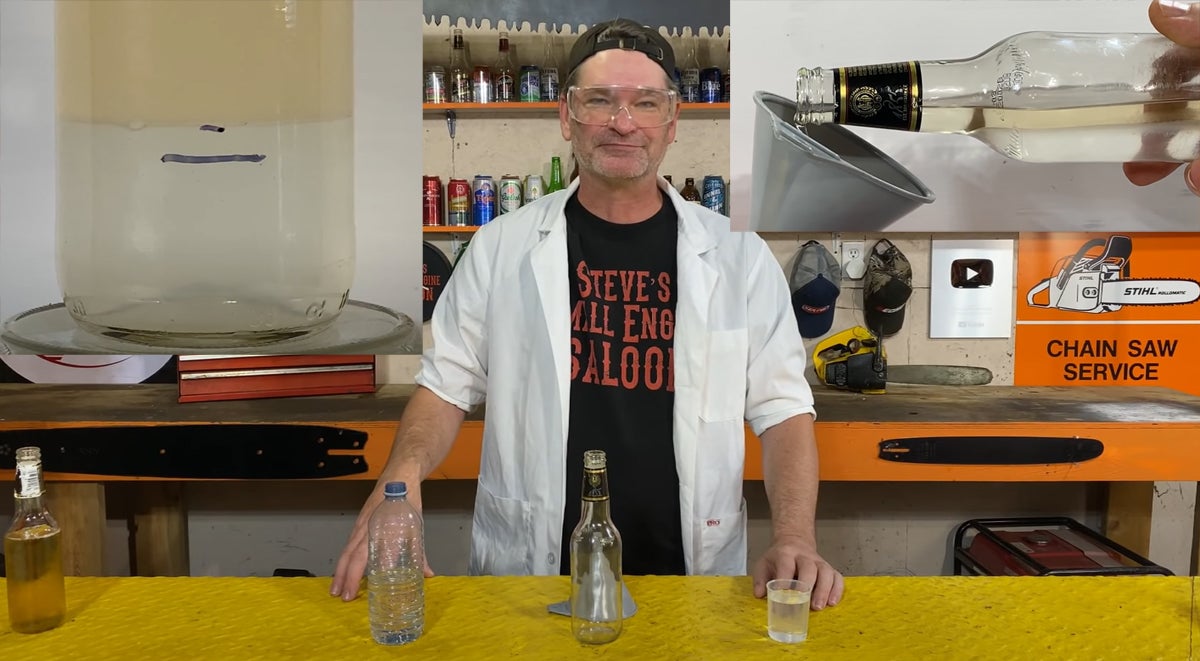Fast & Easy Way to Check for Ethanol in Gasoline
Russ Chastain 10.05.20

(Image: Screenshot from video)
How can you tell if your gasoline has ethanol in it?
If you use small engines a lot as many outdoors folks do, you have probably noticed some problems in the last several years, as more and more ethanol has been added to gasoline. While it does tolerably in cars and trucks, ethanol is hell on most small engines, destroying parts inside the carburetor, fuel lines, and even gas caps! Ethanol also attracts moisture, and you really don’t want water in your gasoline.
Aside from this, ethanol gas doesn’t have much of a shelf life — and when it evaporates from an old carburetor or fuel tank it leaves behind a gunky mess of varnish that’s difficult to clean. So several years ago I started buying ethanol-free gas for all of my small engines: Tractors, trimmers, blowers, chainsaws, ATVs, UTVs, outboard motors, generators, pressure washers, etc.
Ever since I began buying my small engine fuel from a semi-local gas station (the closest source), I have suspected that it’s not really 100% ethanol-free. But how can I tell? Well, that’s what our Canadian buddy Steve is going to tell us in this video.
I like this fellow because he provides down-to-earth advice on small engine stuff… plus he clearly likes beer. My kinda guy.
“This one right here’s gasoline; this is beer. Don’t get these mixed up.”
Sound advice.
Basically, you mix your fuel with water at a 3:1 ratio in a transparent container and see if the volume of the water increases. He uses 3 ounces of water and 9 ounces of gas — and don’t worry, that gas isn’t going to be wasted.
For this, you pour in the water first and make a mark on the side of the container at the water level. Then you dump in the fuel. Shake it up to mix the water with the fuel, set it down, and walk away for five minutes.
When you return, check the level of the water. If it’s higher than your original mark, that fuel had ethanol in it — and the ethanol and water have become one solution because as you may recall, ethanol attracts moisture.
Once it settles out and stops being cloudy, the gasoline on top of the water is ethanol-free fuel. Sweet! You will want to separate it from the water so you can use it in one of those small engines you’re trying to protect.
Remember when I said this guy was practical? He says not to throw away the water/ethanol/trace-of-gas mixture that remains in your container after you pour off the gas, because it works well as a cleaning solution in an ultrasonic cleaner! Who knew?
